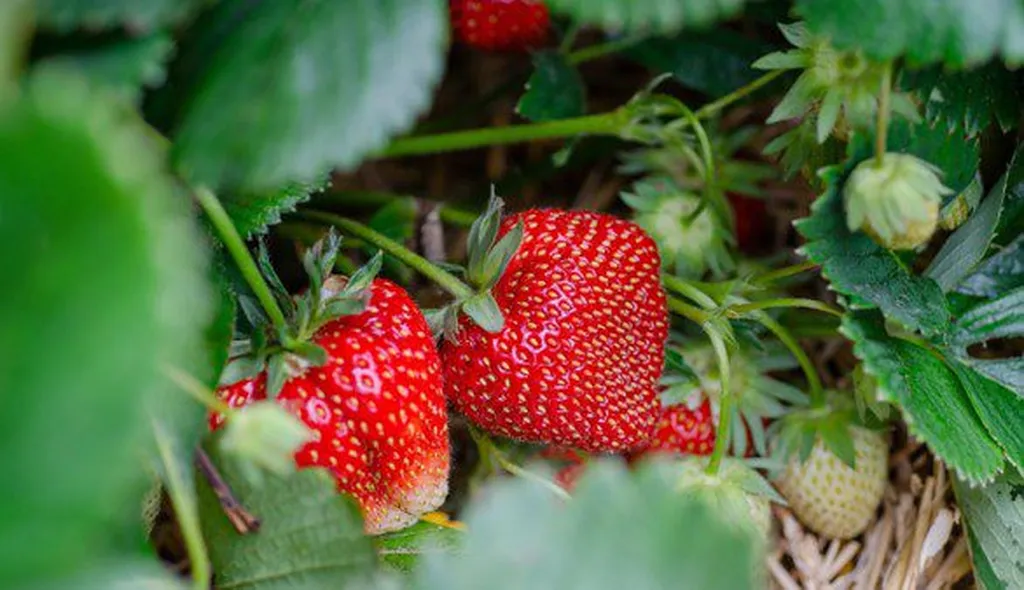In the quest to reduce post-harvest losses in the strawberry industry, a groundbreaking study led by Jonnel Alejandrino from the Department of Electronics and Computer Engineering at De La Salle University in Manila, Philippines, has introduced a non-invasive bioelectrical spectroscopy method that could revolutionize how we determine the physiological maturity of strawberries. Published in the journal *AgriEngineering* (which translates to *Agricultural Engineering* in English), this research offers a promising solution to a longstanding challenge in the agricultural sector.
Strawberries are notoriously delicate, and improper handling or harvesting at the wrong time can lead to significant losses—up to 50% of the crop. Traditional methods of assessing maturity often involve invasive techniques that can damage the fruit or are subjective and inconsistent. Alejandrino’s team sought to address this issue by developing a non-invasive, in situ method that could accurately classify strawberries based on their physiological maturity.
The study involved distinguishing between 100 physiologically ripe (PR) and 100 commercially mature (CM) strawberries using traditional assessments and invasive metrics. The researchers then measured the bioelectrical spectra of the strawberry peduncles (the stems that attach the fruit to the plant) across a range of frequencies from 1 kHz to 1 MHz. This process generated a vast amount of data—80,000 raw data points—from which they derived key parameters such as magnitude, phase angle, resistance, and reactance.
“By analyzing these parameters, we were able to identify distinct spectral signatures that differentiate between PR and CM strawberries,” Alejandrino explained. “This allows for a more precise and objective assessment of maturity, which is crucial for reducing post-harvest losses.”
The team systematically preprocessed the spectral data and used Bode and Cole–Cole plots to visualize the differences between the two maturity stages. They identified seven key frequencies that were particularly informative and derived 37 engineered features from these frequencies. Through feature selection, they narrowed these down to six critical parameters: phase angle at 50 kHz, relaxation time, impedance ratio, dispersion coefficient, membrane capacitance, and intracellular resistivity.
To evaluate the effectiveness of their method, the researchers employed four different algorithms—TabPFN, CatBoost, GPC, and EBM—and used Monte Carlo cross-validation with five iterations to ensure robust evaluation. The CatBoost algorithm emerged as the most accurate, achieving a classification accuracy of 93.3% ± 2.4%.
The study also found strong correlations between the bioelectrical parameters and invasive reference metrics such as firmness and soluble solids, with correlation coefficients of 0.74 and -0.71, respectively. These findings suggest that the bioelectrical spectroscopy method can provide a reliable and non-invasive alternative to traditional assessment techniques.
The implications of this research are significant for the agricultural sector, particularly in the realm of digital agriculture and digital phenotyping. By enabling more precise and objective assessments of fruit maturity, this method could help farmers and agricultural businesses reduce post-harvest losses and improve the overall quality of their products. “This technology has the potential to transform the way we handle and process strawberries, ensuring that only the best-quality fruit reaches the market,” Alejandrino noted.
Looking ahead, the success of this study could pave the way for similar applications in other crops, further enhancing the efficiency and sustainability of agricultural practices. As the agricultural industry continues to embrace digital technologies, non-invasive methods like bioelectrical spectroscopy could become a cornerstone of modern farming, helping to minimize waste and maximize yield.
In summary, Alejandrino’s research represents a significant step forward in the field of agricultural technology, offering a practical and effective solution to a longstanding challenge. As the industry continues to evolve, the integration of such innovative methods could play a crucial role in shaping the future of agriculture.

